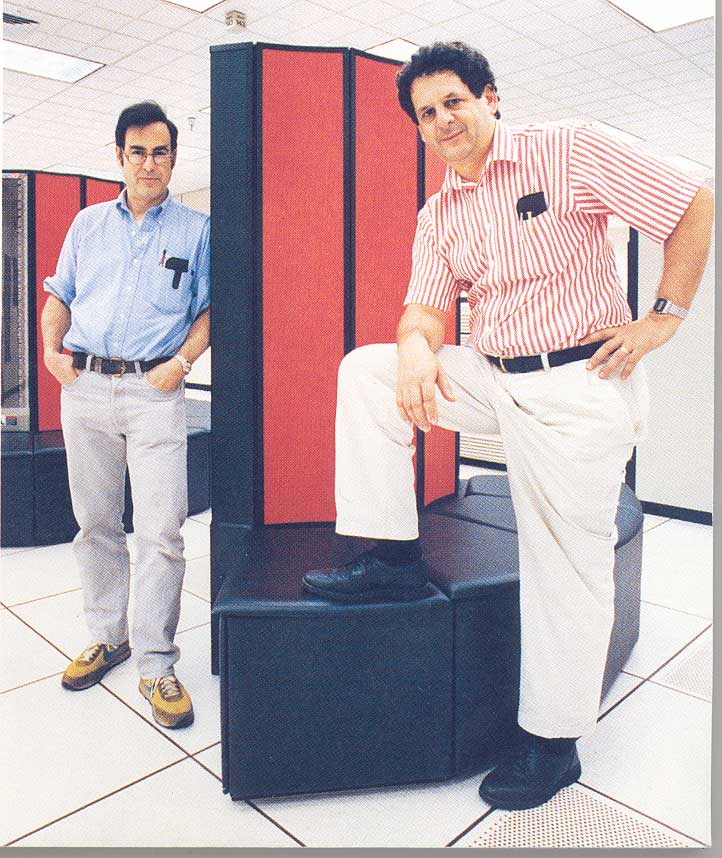
Today the Pittsburgh Supercomputing Center (PSC) celebrated the 35th anniversary of its first supercomputer.
The National Science Board approved funding for PSC on Jan. 17, 1986. The center’s first computer, a CRAY X-MP/48, was dedicated on June 9 of that year. Today’s smartphones have more computing power than that first Cray; PSC’s flagship system today, Bridges-2, is over 2 million times faster. But that comparison doesn’t give the advancements in supercomputing over the years full credit, as Bridges-2 offers Big Data memory, data storage and graphics-processing-unit-powered acceleration in artificial intelligence far beyond the Cray’s capabilities.
Bridges-2 offers scientists and other researchers unique capabilities in fields as different as Big Data analysis, artificial intelligence, biomedicine, materials science, cosmology and astronomy, history, the digital humanities and more. Bridges-2’s design, along with expert scientific support that enables researchers in these fields (many of whom never used computers, let alone supercomputers, in their work) to get “up and running” with a minimum of time and effort. Bridges-2 is funded by the National Science Foundation (NSF).
The special-purpose supercomputer Anton 2 at PSC offers biomedical scientists the ability to simulate molecular interactions for much longer time periods than general-purpose supercomputers, opening up new insights into the biochemistry of life as well as drug research. Anton 2 is hosted at PSC thanks to its designer and developer, D. E. Shaw Research, with operational funding from the National Institutes of Health.
Later this year, PSC’s NSF-funded Neocortex system will enter its Early User Program, offering researchers an unprecedented tool for research on artificial intelligence.
PSC is a joint center of Carnegie Mellon University and the University of Pittsburgh, fostering collaboration across university, industry and government organizations; funded by federal agencies with support from the Pennsylvania Department of Community and Economic Development. Most of the researchers who work with PSC’s computational experts and computing systems do so at no cost; U.S. academic scientists working on nonproprietary research can access our systems by submitting a proposal to a peer-review committee.
You can find more about Bridges-2 here.
